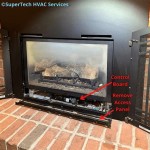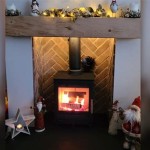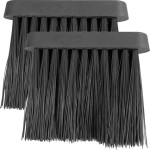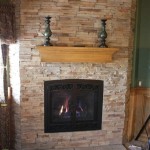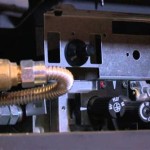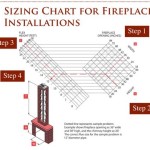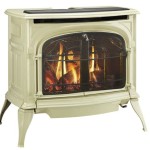Finding the Right Heatilator Fireplace Replacement Parts
Heatilator fireplaces are a popular choice for many homeowners, offering both aesthetic appeal and functional warmth. However, like any appliance, fireplaces require maintenance and occasional repairs. Identifying and sourcing the correct Heatilator fireplace replacement parts is crucial for ensuring the continued safe and efficient operation of the unit. This article provides a comprehensive overview of Heatilator fireplace components, common issues, and how to find the appropriate replacement parts.
Understanding Heatilator Fireplace Constructions
Heatilator fireplaces come in various models, each with specific components designed for its unique functionality and aesthetic. Generally, these can be categorized into gas fireplaces and wood-burning fireplaces, each having distinct key components.
Gas Fireplaces: Gas fireplaces offer convenience due to their ease of use and temperature control. Critical components in a gas fireplace include the gas valve, pilot assembly, thermocouple or thermopile, burner, and igniter. The gas valve regulates the flow of gas to the burner, controlled by the user. The pilot assembly provides a small, continuous flame that ignites the main burner when needed. The thermocouple or thermopile monitors the pilot flame; if the pilot light goes out, it shuts off the gas supply for safety. The burner is where the gas combusts to produce heat and flames, and the igniter creates the initial spark to light the pilot. Heatilator gas fireplaces often include decorative elements, such as ceramic logs or glass beads, that can also require replacement due to damage or wear.
Wood-Burning Fireplaces: Wood-burning fireplaces offer the traditional appeal of a real fire but require more hands-on operation and maintenance. Key components include the firebox, damper, grate, and chimney. The firebox is the insulated chamber where the fire is built. The damper controls airflow up the chimney, regulating combustion and preventing drafts when the fireplace is not in use. The grate supports the wood fuel, allowing air to circulate underneath for better burning. The chimney is responsible for venting smoke and combustion gases safely out of the house. Additionally, many wood-burning fireplaces have accessories like screens or doors, which can also be damaged and in need of replacement.
Understanding the specific model number of your Heatilator fireplace is crucial when searching for replacement parts. This number allows for precise identification of compatible components, as parts are not universally interchangeable between different models. The model number is typically located on a metal plate or sticker attached to the fireplace itself, often in a concealed area such as behind the control panel or inside the firebox.
Common Problems and Replacement Parts
Various issues can arise within a Heatilator fireplace, necessitating the replacement of specific components. The frequency and nature of these problems vary depending on the type of fireplace, the frequency of use, and the quality of maintenance.
Gas Fireplace Issues: Gas fireplaces often experience problems with the pilot light, which may fail to stay lit or ignite properly. This can be due to a faulty thermocouple, a clogged pilot assembly, or a malfunctioning gas valve. Replacement of these components is often necessary. Burners can also become clogged or corroded over time, leading to uneven flames or reduced heat output. Damaged or worn-out ceramic logs can also impact the aesthetic and efficiency of the fireplace. Replacement parts for gas fireplaces typically include thermocouples, pilot assemblies, gas valves, burners, igniters, ceramic logs, and flame sensors.
Wood-Burning Fireplace Issues: Common issues with wood-burning fireplaces include a damaged firebox lining, a malfunctioning damper, and a cracked or broken grate. The firebox lining, made of refractory bricks or panels, protects the surrounding structure from the intense heat and can crack over time, requiring replacement. A damper that is stuck open or closed will diminish the fireplace's efficiency and can cause safety concerns. A grate can warp or break due to the weight and heat of the fire. Users should also inspect the condition of the chimney. Deterioration of the chimney liner can allow harmful gases to leak into the home. Creosote buildup is also a safety concern. Replacement parts for wood-burning fireplaces typically include firebricks, damper assemblies, grates, fireplace screens, and chimney liners.
Selecting the correct replacement part is paramount for the proper operation and safety of the fireplace. Using a non-compatible part can lead to inefficient performance, damage to other components, or even hazardous situations. It is advisable to refer to the manufacturer's specifications when selecting replacement parts and, if uncertain, to consult with a qualified fireplace technician.
When ordering replacement parts, it is important to check the manufacturer's reference number to verify it is the correct part for the specific model. Incorrect part numbers can result in receiving a part that is incompatible and therefore unusable.
Sourcing Heatilator Fireplace Replacement Parts
Finding the correct Heatilator fireplace replacement parts involves identifying reliable sources and carefully reviewing product specifications to ensure compatibility. Several avenues exist for sourcing these parts, each with its own set of advantages and considerations.
Authorized Dealers: Authorized Heatilator dealers are a reliable source for genuine replacement parts. These dealers have direct access to the manufacturer's inventory and can provide expert advice on selecting the correct components for your specific fireplace model. While authorized dealers may have higher prices compared to other sources, they offer the assurance of quality and compatibility. Furthermore, authorized dealers often provide warranty support for the parts they sell.
Online Retailers: Numerous online retailers specialize in fireplace replacement parts, offering a wide selection of Heatilator components at competitive prices. However, caution should be exercised when purchasing from online retailers to ensure the authenticity and quality of the parts. Verify the retailer's reputation and read customer reviews before making a purchase. Also, be sure to cross-reference the part number with the manufacturer's specifications to guarantee compatibility.
Local Hardware Stores: Some local hardware stores carry a selection of common fireplace replacement parts, such as grates, firebricks, and dampers. While the selection may be limited compared to authorized dealers or online retailers, hardware stores offer the convenience of immediate availability and the opportunity to physically inspect the parts before purchasing. Before visiting a hardware store, it is advisable to call ahead to check the availability of the required parts.
Regardless of the source chosen, it is crucial to have the Heatilator fireplace model number readily available when searching for replacement parts. This number allows for precise identification of compatible components and helps avoid the purchase of incorrect parts. In addition to the model number, it may also be helpful to have the part number of the component being replaced, if available.
When receiving the replacement part, inspect it thoroughly for any damage incurred during shipping. Contact the seller immediately if any damage is detected. Before installing the new part, compare it carefully with the old part to ensure that it is a proper fit and has the same specifications. If there are any discrepancies, do not proceed with the installation and contact the seller for clarification.
Safety considerations should be taken into account when installing replacement parts. Shutting off the gas supply is critical when working with gas fireplaces. Consulting a professional is advisable for those unfamiliar with gas or electrical appliance repairs.
After replacing the fireplace parts, test the fireplace to ensure it functions properly. Check for gas leaks in gas fireplaces by applying a soapy water solution to the gas connections and observing for bubbles. For wood-burning fireplaces, ensure that the damper operates smoothly and that the chimney is clear of obstructions. If any issues are detected during testing, consult with a qualified fireplace technician to diagnose and resolve the problem.
Finally, maintain the fireplace properly to extend its lifespan and prevent the need for frequent repairs. Clean the fireplace regularly, inspect the components for wear and tear, and schedule professional maintenance inspections as recommended by the manufacturer. By following these guidelines, homeowners can ensure the safe and efficient operation of their Heatilator fireplaces for years to come.

Update Your Heatilator Mark 123 Fireplace In No Time

Heatilator Fireplace Brochure Manuals Guides Parts Fans
Renovators Manufacturer Of Old Heatilator Fireplace Claims To Have No Information Do You Diy Home Improvement Forum

Update Your Heatilator Mark 123 Fireplace In No Time

Heatilator Icon 80 Herringbone Refractory Bricks 33676 33677 33687 33696

Heatilator Heirloom Gas Fireplace Fireside Hearth Home

Gfk4 Gfk4a Fireplace Blower Fan Kit For Heatilator Fireplaces

Installing A Fireplace Blower Gfk4 Gfk4a In Heatilator Natural Gas

Heatilator Hb36 Fireplace Replacement Parts

Replacement Glass Doors For Heatilator Fireplaces Safety

